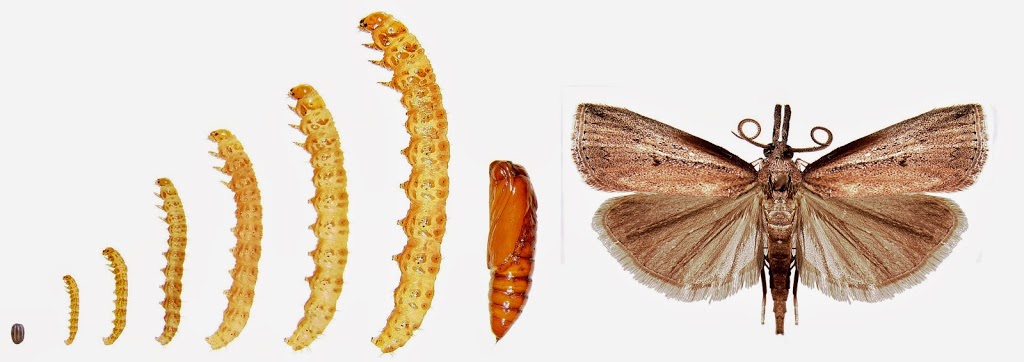Summer Lawn Alert – Sod Webworms
Sod Webworms can be serious pests for your lawn…and because of the summer rains and heat, the most severe damage usually occurs now.

You’ve worked hard to grow the kind of turf that makes your neighbors turn green with envy – and then “they” show up. They are sod webworms, and they love to eat away at lush, green grass, turning a manicured lawn into a brown patchy mess.
There’s no way to prevent them. They look like common moths as they fly over your lawn, but this innocent-looking creature will lay clusters of eggs that, once hatched, can quickly destroy your beautiful yard if left unchecked. Sod webworms are small caterpillars that typically feed on otherwise healthy lawns during the hottest months of the year: July, August and September.
What are Sod Webworms?

These lawn pests are 3/4″ to 1″ long and light green and brown in color. They can voraciously mow down significant amounts of your lawn seemingly overnight. They look like tiny caterpillars but you may not see them as they hide in the soil. You may, however, be able to see the green pellets they leave behind on grass blades. You may also notice the moths that lay the eggs flying around in late afternoon. Sod webworms chew off the grass blades in your lawn and the damage looks similar to a badly-cut lawn.
What is the Lifecycle of a Sod Webworm?

Sod webworms start life as an egg laid by an adult moth. The eggs hatch into caterpillars that are about an inch in length. These brown and green caterpillars are not discriminating in which lawn they eat, chewing away at grassy golf courses, athletic fields, parks, and residential yards. The caterpillars eventually become adult moths and the cycle starts all over again.
How Do I Know I Have Sod Webworms?
Use these pointers to help you find and eliminate sod webworms before they get the best of your back yard:
- Check for brown spots or uneven, jagged edged lengths of grass in your lawn; this is a potential sign your lawn is under attack
- Augustinegrass lawns are most commonly attacked by sod webworms but they can feed in other types of lawns as well. It is common to find them feeding first in small patches of crabgrass so pay close attention to these weedy patches as an early warning that they may be getting ready to feed on your prime St. Augustinegrass lawn.
- White spots on grass blades indicate that young sod webworm caterpillars are present, where they scrape the leaf surface and leave only the veins of each blade
- Look for small, brownish-gray moths flying around in the late afternoon; these are adult versions of this pest that can indicate a new wave of caterpillars are on their way to damage your lawn.
What Should I Do If I Suspect I Have Sod Webworms?
Act quickly! If you keep your lawn well irrigated and fertilized, you probably will not sustain significant damage. For lawns that are not constantly cared for, however, sod webworm damage can be quick, severe and is often mistaken for a damaged lawn.
If you already have damage from sod webworms, you should have your lawn treated immediately. If you think you have sod webworms, contact a licensed landscape professional for a free landscape inspection.
Massey’s Landscape Program takes a preventive approach to lawn pests by building a strong root system that creates a thick, healthy lawn which is more resistant to sod webworm damage. We take measures to keep these summer pests from invading your lawn.
Need help with sod webworms? Click here to schedule a free, no obligation landscape inspection and analysis.